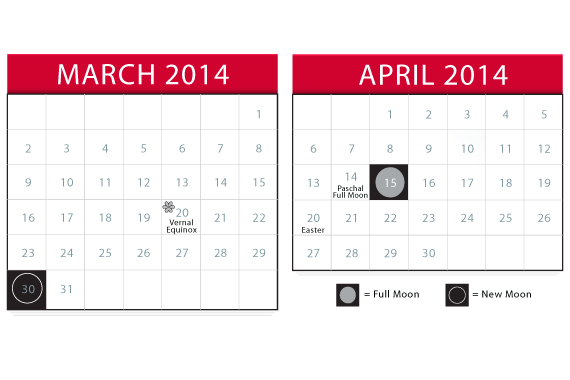
There are only 14 possible calendar years in the Gregorian system (if you’re wondering whether you use the Gregorian calendar, you do): seven calendars for every day of the week on which the first of January can fall, and seven more that include February 29 (the intercalary day added during a Leap Year). However, if you consider the 34 dates possible for Easter Sunday, there are 476 possible calendars.
Computus is a Latin term that refers to the calculation of the date on which Easter falls. The first Easter, that is, Christ’s resurrection, took place on the Sunday following Passover, a week-long Jewish holiday in the Hebrew month of Nisan, so commonsense tells us that Easter should be connected with Passover. At the First Council of Nicaea in 325 AD, however, it was agreed that Christians should establish the date of Easter independent from the Jewish method.
Put simply, Easter falls on the first Sunday after the Paschal Full Moon. The Paschal Full Moon is defined as the first Ecclesiastical Full Moon after the Vernal Equinox. An ecclesiastical full moon is the 14th day of the lunar month (astronomically, the moon is not always full on the 14th of the lunar month; but it can only vary by two days). The Gregorian calendar is a solar calendar, not a lunar calendar, so some calculating is necessary to make the conversion.







